Fish Farming Business Plan:
Introduction to Fish Farming Business Plan:
If you are planning for a commercial fish farming business, no doubt fish farming is a more profitable venture. In a commercial fish farming business plan, first need to study about the process of farming fish for a good profits.
Market analysis and business plan are the must to initiate a fish farming business. You should do an intensive market research before getting into it. Then analyze the local market trends and demand for type of fishes. If you are planning for commercial fish farming business for exporting, then talk to fish processing units prior. Choosing exact fish species for your business to get success in fish farming business. Choose fish species for farming depends on the climatic conditions, market demand, maintenance point of view, and as per the availability of resources etc.
To get complete knowledge about fish farming business, you can get training from Government running farms that conduct training. Or working at a successful fish farm give you a good knowledge of farm management, water quality management, disease control, feeding, marketing and processing skills.
For a profitable farming, you should get the complete information about hatching fish, eggs and then grooming them to the maturity.
There are two basic methods of farming fish based on the species of fish you have chosen. Starting a fish farm business, you need to ready to face many hurdles, fish farming indeed a profitable business venture. First, decide whether you are planning for a small scale or on a large scale commercial fish farming based on your financial status.
Fish Farming Business Plan – A Complete Guide
Industry Overview
The Aqua Industry is no doubt a leading industry in most countries of the world: commercial fish farming business plan includes farming of different species of fishes.
The Fish and Seafood, Aquaculture industry is a large, very large industry and have good market in all parts of the world, especially the countries, United States of America, India, Canada, United Kingdom, Portugal Germany, Australia, the Caribbean etc.
Most fish farmers do commercial fish farming business, some best niches of commercial fish farming are:
- Raising and harvesting finfish (e.g. Catfish, trout, tilapia and minnows)
- Raising and harvesting shellfish (e.g. Clams, oysters, crustaceans, mollusks and shrimp)
- Raising and harvesting ornamental fish (e.g. Goldfish and tropical fish)
Fish Farming Business Plan – Types of Fish Farming:
There are many varieties of fishes that can be raised for commercial fish farming business. In you fish farming business plan, type of fish farming plays a key role. Most common fishes farmed in commercial farms are salmon, carp, tilapia, catfish and cod.
- Catfish Commercial farming
Catfish most suitable and profitable species for commercial fish farming. Catfish has huge market demand for its amazing health benefits and market demand. In a commercial fish farming, catfish takes 18 months to get ready, catfish grown in fish pond is smaller than the wild catfish. There are several varieties of catfish species, most popular catfish varieties are blue catfish, channel catfish, and flathead catfish.
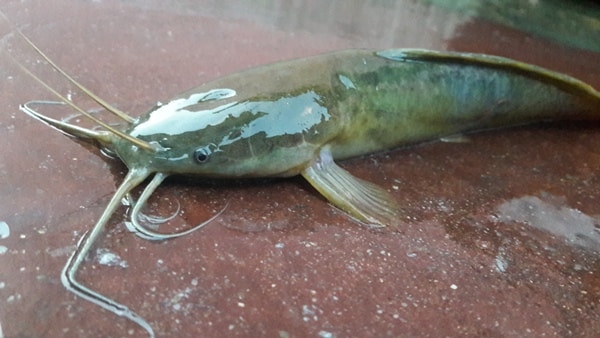
- Tilapia Commercial farming
Tilapia is another profitable fish species suitable for commercial fish farming after carp and salmon. These fish have great demand for its high popularity and rich in proteins and vitamins. Tilapia fish grow to large size depending on the capabilities. Tilapia fishes are tropical varieties requires required warm water to grow. The ideal water in the fish should be temperature be between 28 to 30 degrees. These fish ponds need intensive management. Tilapia’s are more resistant to disease and parasites. Tilapia fish should be fed with cereal-based diet and these fish don’t eat other fishes, and these fish are considered as more invasive fish species.
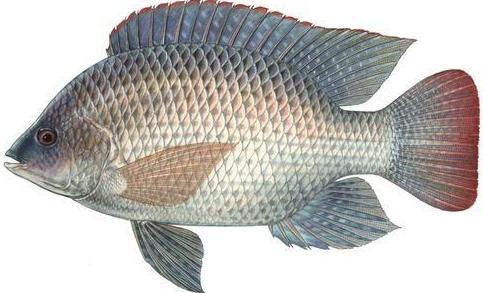
- Salmon farming
Salmon is another popular variety for commercial fish farming. Salmon fish comes in two other varieties are – Chinook and Coho. These fish species are not disease resistant, these should be vaccinated to prevent from diseases and they even need additional medication in extreme conditions.
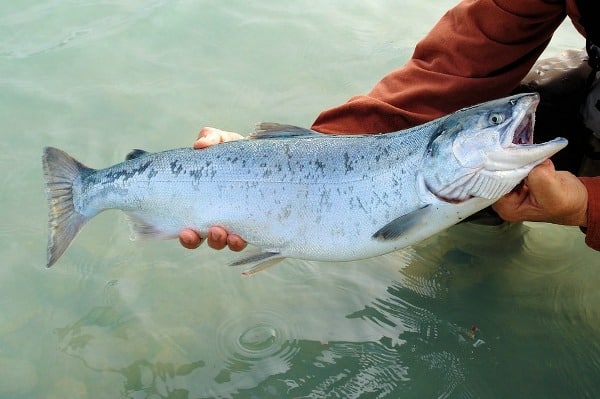
- Tuna Commercial farming
Tuna fish are saltwater species that give more profits in commercial fish farming. There are different varieties of Tuna fishes, bluefin, yellowfin, and albacore. Commercial farming Tuna fish is a bit difficult as these fishes are massive and very active. Tuna fish are carnivores and these fishes eat other fishes. Farming of Tuna fishes is done in net pens offshore and in recirculation systems. Japan is the largest consumer of Tuna Fish.
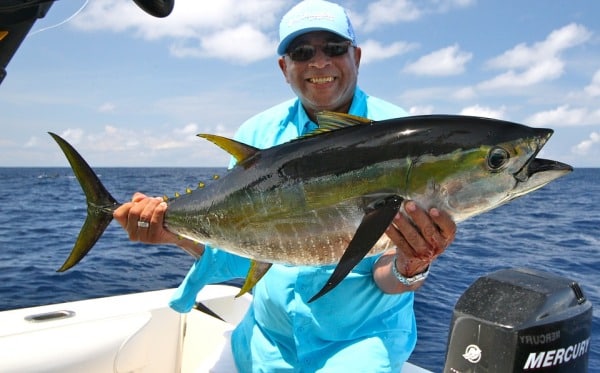
- Eel Commercial farming
Eel fish farming is the profitable species for commercial fish farming. These fishes have huge demand in export markets. Eels fishes are a carnivorous and catadromous fish, means these fishes grow in fresh water when they are young, and they migrate to sea water for breeding. Asia, China, Japan and Taiwan are leading producers of commercial eel fishes as the biggest producers. Eel farming can be grown in – high intensity recirculating tank (indoors) or intensive pond facilities.
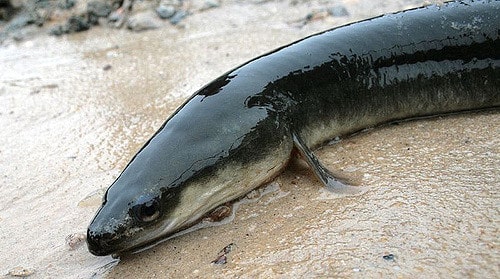
- Shrimp Farming
Commercial shrimp farming has a great market in the Asian market. Commercial shrimp farming has a simplest culture approach. Shrimp has a great market demand is very high and you can initiate small and large-scale shrimp farming very easily with less effort.

- Ornamental Fish Farming
Ornamental fishes are colorful and attractive and generally known as aquarium fish. According to an NABARD report the ornamental fish trading industry with a turnover of US $ 6 Billion and an annual growth rate of 8 percent offers lots of scope for development.
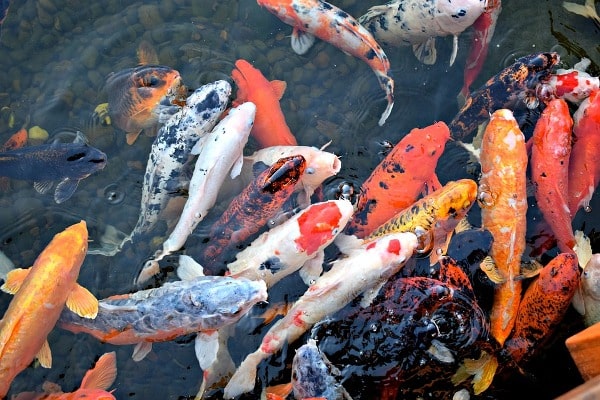
Fish Farming Business Plan – Fish farming supplies for Commercial Fish Farming:
You require many fish farming supplies for in commercial fish farming business. A commercial farming equipment’s and systems required for commercial farming business are fish feeds and fish feeders, filtering systems, air pumps, heating and cooling systems, lighting equipment, hydroponics equipment, predator control fences, tanks and water treatment products.
Feed and feeders Feed quality plays a key role fish farming. Feeding depends on desirable color, growth and overall health and well-being of the fishes. There are a wide variety of different feeds are required for different types fish species.
Water Filtration Systems: Water filtration systems are important, that shows the great impact on pond environment. Filtration includes removal of waste products in the pond water. There are several varieties of filtering systems that can be used, depends on the requirement.
Hatchery supplies: Commercial fish farming required hatchery equipment’s like fish graders, shipping supplies to spawning and handling containers.
Predator control: You should take necessary steps in controlling predators. Take the necessary steps like fences, and physical deterrents like visual and audio deterrents.
Fish Farming Business Plan:
Construction of Fish Ponds for Fish Farming Business:
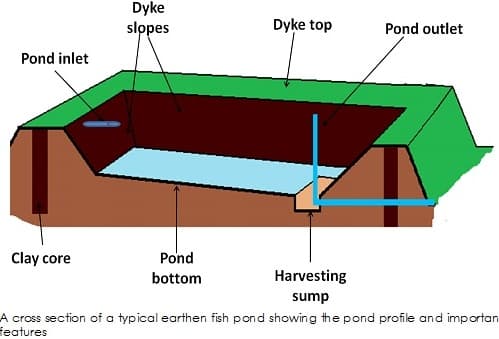
Fish farming business is an ancient farming method that has increased its market these days. Fishes are a great source of vitamins and proteins, through commercial fish farming that is done in fresh water can help you to grow different variety of fishes for consumption.
Building a fish farming pond is a tough task, but running a fish farming business is rewarding, fun, and can earn you good returns in the long run.
Read: Dairy Farming Courses, Fees in India.
Here we give you a complete information about a fish farming pond in a fish farming business plan:
Pond Building Preparation
First, Decide the type fish farm: Before you are planning for fish pond construction and design, first decide,
- Type of fish you are planning to farm.
- The size the fish you can grow when they are grown up.
How Many fishes you can grow in a fish pond?
The Pond size should be capable of handling the type of fish you are planning to grow. If growing too large size fish, pond size may be sufficient when they are small in size, but if they attain a large size, the space may be congested. So, make a deep study about the type of fishes and their required pond size.
Select A Suitable Location for constructing fish pond:
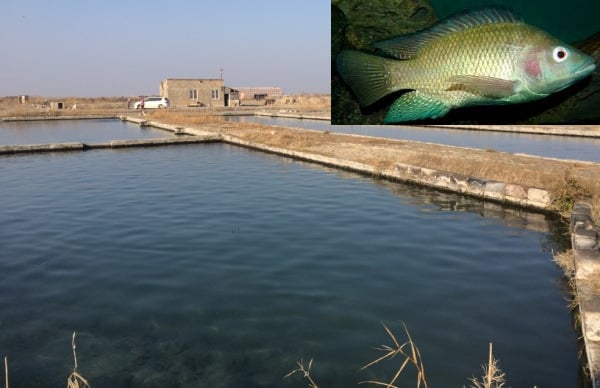
The Position of the fish pond plays a key role in good and healthy growing fishes. If planning a fish farm in backyards or any other place, select an appropriate position. Consider the following steps before choosing a location for the fish pond:
- The level of the ground in the site should be a bit low and flat. If not first thing is level up the ground completed.
- The fish pond should have a good provision to collect natural rain water or runoff. This helps to keep the pond water fresh.
- Construct the barriers around the fish pond.
- If the area you are constructing a fish pond, where there are more chances to face extreme hot and extreme cold climates. In these areas the depth of the pond should between 8 ft to 12 feet, so that the fishes can get enough space to get shelter during peak summers and peak winters.
Consider these tips before to determine a good location that is suitable for your fish pond.
How to dig a site for Fish Pond:
Once the location is decided, now draw the sketches and map exact measurements and the dimensions of the pond.
Mapping can help to you to visualize the size and the design of the pond. You can also use ropes or garden hoses to draw the design of the fish pond. Once the layout is ready, now ready to dig the fish pond.
Things to be considered before digging:
- The gas pipes, electric lines, water pipes or sewerage lines should be buried below the ground.
- The roots of the big plants may be left at the bottom the pond and there are chances to grow again and occupy the tree. If digging the ponds next to big trees, make sure that the root system of the trees should take care properly to stop them growing in the pond.
Fish Farming Business Plan – Building Your Fish Farming Pond:
Digging Your Fish Farming Pond
- Depending on the size of your fish farm, if planning to dig manually using large shovels and labor, it consumes a lot of energy and a lot of time. A bobcat or excavator that is used in digging up the pond will save a good amount of time.
- Don’t dig at the top of the hole on a slope.
- While digging, it is better to dig 16 inches at once on the outer edges and place the waste soil as a pile at the backside of the pond.
- When digging in the center, start to dig deeper this helps to create an even slope in your fish pond. This will help the excavator move easily in and out of the pond easily.
- Measure the depth constantly to get the exact depth of pond that you are planning.
- To form defined edges at last and dig around the outer edge with a shovel to level it better.
Considering these tips will help you be able to dig your fish pond more successfully without hurdles.
Fish Farming Business Plan- Lining the Fish Pond:
Once the fish pond is dug, line it up with a rubber liner or a tarp. This tarp or liner used in fish ponds should be suitable for fish ponds so that is doesn’t harm the fishes. Before laying the trap at the bottom first make a thin layer of sand across the surface area of the hole to reduce the tears.
And to protect this liner or trap you can also use some geotextile fabric that protects runner liner from getting damaged. The main reason for using a trap is it protect the water from seeping out into the surrounding lands. If trap not used water should be supplied constantly into the pond to maintain the water level in the fish pond. Otherwise, you need to fill the pond with to maintain the water level.
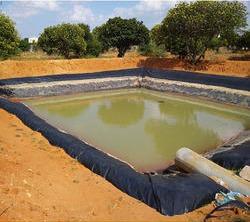
Ponds can be sealed without rubber liners or traps, these are also many other best and cheapest options other than liner or traps. But this process depends on your soil type and the clay content of the soil. Even you can get a sell sodium bentonite clay that is used as a pond sealer.
Even there are many sustainable traditional pond liners that are worth safe for using. We also use polyethylene with ethanol-based plastics which is better than fossil-fuel based plastic liners.
If you are using a rubber liner or tarp at the bottom, it is a good idea to start to place it from the center of the pond. The size of the traps or liner depends on the size of the ponds, order a sufficient number of liner that can cover a complete pond area.
Next is filling the Pond With Water:
- Once the pond is fitted with the liner or trap, then place a big stone at the center of the pond, this protects liner or traps from lifting and floating when water level falls.
- Filling up the pond depends on the size of the pond. Water should be filled from the side, so that it will help trap to conform slowly to the weight of the water. And place stones at the outer edge liners, that helps liners or traps from falling as the amount of water increases.
- If you are not using pumping system, then fill the pond with fish. Fish need oxygenated water to live and stay healthy. Place the running hose in water to generate oxygen in water, water should be oxygenated 2 to 3 times in a week and time duration should be 15 to 30 minutes.
Fish Farming Business Plan – How to Introduce fish into the fish pond:
While introducing fish into pond, fish make water to settle completely, so that dirt gets settled completely. Now mix fishes slowly in the fish pond water in a bucket water first for 10 to 15 minutes that will help the fish to acclimatize to the new water PH levels.
Now slowly tip the fish into the fish ponds. Minimizing the stress levels in the fish will increase the rate survival and make to adjust new environment quickly.
Don’t make mistake by adding all the fishes at once, add in small amounts and check wait for 2-3 weeks. If the maximum number of fishes is alive, then add remaining fishes.
If you see more dead fish, them check with cause, before adding remaining fishes. The pH levels in the soil can cause death of fishes, some fishes require a set PH level to survive in. If the pH level is under control, check with an expert to address the exact problem.
Fish Farming Business Plan – Fish Feed in Fish Farming Business:
Feeding is the main part in the fish farming business. Fish needs good and nutritious feed for proper growth and survival. Feed management plays a key success in fish farming business. The feed should be well balanced, nutritious feed which includes protein, carbohydrate, fat, vitamins, minerals and water. The moss or aquatic insects are considered as a natural feed that in available in that pond, which not sufficient for all the fishes. These natural feeds consumed by the fish during early stages. Some fertilizers are available that produces natural feed in the ponds, but these are not recommended. Along with natural feeds, supplementary feed ensures the fast growth of fish. So, for a commercial fish farming business, we must use supplementary feeds to increase production of fish in short span of time.
Fish Farming Business Plan – Different Types of Fish Feed:
There are two different types of fish feed. One is Natural feed and other is supplementary feed.
Natural Fish Feed
The natural fish feed is which grows naturally in the pond, this feed increases the natural fertility of soil and water and this feed can be developed in pond by applying fertilizer is called a natural feed of fish. Natural feed is the main and the best feed for surviving of fish at early stages. Below are some natural feeds for fishes that should be available in the pond.
- Plankton
- Wolffia, eichhornia, pistia, lemna
- Tiny aquatic insects
- Rotted part of animal and plants
- Basal organic elements
- Varieties of grasses like napier, para etc.
Supplementary Fish Feed
Along with natural feed we should also provide some supplementary food for fishes for a healthy growth. As the natural feed available may not be sufficient when they grow bigger. These supplementary feeds which we provide for the fishes are called supplementary fish feeds. Supplementary fish feeds are available in the market or you can prepare yourself.
Supplementary Fish Feeds:
- Rice bran
- Refined pulse and wheat roughage
- Mustard or sesame cake
- Fish-meal (fish powder)
- Crop grain
- Silk kit meal
- Blood and excreta of bird or animal
- Green leaves of various vegetables
- Minerals and vitamins
- Kitchen leftovers
- Maize powder and refined chaff
- Dried molasses, etc.
How to store the Fish Feed:
- Low moisture fish feed and dry pellet feeds are stored only for two to three months, and these should be stored in a dark cool and dry place.
- High moisture feed and moist pellet feed can be stored for a one week, store them in a freezer, if that facility is not available, use them as soon you buy the feed.
- The Powdery fish feed will pollute water if left in the water for a long time. They should be cleaned regularly.
Fish Farming Business Plan – Marketing Plan in Fish Farming Business Plan:
A successful approach in developing a business plan for fish farming, there are important components to consider before you develop a marketing plan. Below is some feature to consider in fish marketing.
- Fish Market Trends
As the many marketing reports all over the world, the global fisheries and aquaculture production was more than 300 million tonnes by the end of this year. So, by checking the huge demand for fish has increased the fish farming business all over the world. The global aquaculture industry has created the waves for profits in these years. The commercial fish farming has been being increased day by day to meet the demand of the market.
As the people are influenced by the nutritional value of seafood, which increased the demand in all parts of the world. And USA is the largest consumer of fish and the China comes the next. And 90% of fish consumed in the USA are imported from other countries. This shows the potential of fishes in the international market.
But the most interesting facts is that over 90% of the seafood consumed in the US is imported from other countries around the world. That is why the fish farming industry has a lot of potential in the US and can be immensely profitable if you plan it successfully.
- Marketing Segmentation
In a successful fish marketing plan, the customers or consumers or clients are differentiated into different types.
- Individual clients:
In this you can open a small retail outlet in your farming area in the early stages to grab attention of local people. This mainly targets individual buyers, people will be easily attracted by the fresh and natural fish.
- Departmental Stores or super Market or Meat Stores:
Contact with the nearby departmental stores or supermarkets or meat stores and make a contract with them for supplying the fresh farmed fish. These departmental stores are the best source to market the fishes that can earn good amount of profits.
- Restaurants and Hotels:
Make a contract with the surrounding restaurant and hotels who need fishes on a regular basis throughout the year. The restaurants and hotel are the potential clients after the departmental stores.
Make a detailed study of the market where you can find the potential clients.
- Set a Business Target:
Aim the top is the best formula in a fish farming business. Set the business targets with a time limit that should be achieved in a certain amount of time.
- Balance the investment cost with earned profits by the end of the first year.
- And try to achieve the 10% net profit margin per month by the end of the first year, and 15% of net profits per month by the end of the second year, and 25% net profits per month by the end of the third year. This plan will keep you safe in your fish farming business.
How to Give Price for your fish:
Before setting the price considering the market demands, give the price like the price of all your competitors. The main reason in pricing policy is to attract customers, the minimum attractive rate will keep your business at safer zone at the early stages of business. Don’t give too low prices that give you loss.
Fish Farming Business Plan- Quick Tips to be noticed in a Fish Farming Business Plan:
- Make sure that the fish farm site should have a constant water supply.
- Make sure that the water temperature is optimal for the fish species reared or not.
- Make an easy access to the pond for feeding and harvesting.
- Test the water before you start fish farming both chemical and bacteriological.
- Learn about the modern technical method of risk assessment and as well as risk management.
- Find the qualified suppliers for fish eggs, fingerlings and fish feed which is very crucial in the fish farming business.
- Legal compliance and permission should be fingered out before starting a fish farming business in your locality.
- The site should have a good transport facility, that shows good impact on marketing your products and purchasing necessary commodities from the market.
- Take necessary suggestion from experts or the people who are in the same profession in building up your business.
I need a supplier of material for pond lining in Uttar Pradesh or nearby
I have passed M. Sc Zoology with fish & Fisheries and now I want to know fish farm project details.
Check this: RAS Fish Farming Project Report.
I want to start a fish farming business without equipment
I need a consultant for fish farming to start a fresh farm project.
I need a person who can help prepare a business plan and end to end advice before , during and after the project
Can you please send me your quote for the same
I want to start fish farming business in navi mumbai, who can guide me on this ?
I want to start fish farming, Hence theres still a lot for me to learn and how can I embark in this journey. I’ll be happy if thers someone who can help from their goodness of their heart.
> How many baby fish of Catla/Rohu/Mrigel of 50 grams each ( in combination of 30:40:30) can be reared for 3 years in a 6 Bigha pond with6 to 6 to 7 ft water depth in eastern fringe of Kolkata?
> Planning to sale 50% of first year’s stock in the 2nd year and the balance 50% of first year’s stock in the 3rd year .Full stock of first year would again be stocked in the 2nd,3rd,4th year and so on so that the process continues?
> Average good feed cost per month for the suggested quantity just to ensure that the baby fish grows to at least 1 kg/2 kgs and 3 kgs in first,2nd and 3rd year respectively.
> What would be best hatcheries in and around Kolkata wherefrom the best baby fish of 50 grams each could be obtained ?
> What could be price per unit of 50 grams per 1000 pcs?
Shall be thankful,if the said information is provided to me at the earliest.
Regards,
I wish to start a catfish farming in the northern Namibia, I m looking for an investor or anyone to partner up with me,
I want to start a fish farming business in sivagangai( tamil nadu), who can guide me on this?
Are u started ur fish farming..if u started means …plzz guide me ….tell some information .I am from Madurai (tamilnadu).I wish to start a fish farming business.so plz guide me with ur knowledge
I want to start a fish farming in Bayelsa State, Nigeria, please I need someone to guide me by helping me build the ponds and guiding me through the preliminary stages, thanks
I want a complete manual for this type of fishing. Mpika, Zambia.
want start pond fish farming in malawi, looking for guidance manual
Hello, I want to start pond fish farming in Afghanistan, i want complete manual and a sample of business plan in soft please. Thanks
I too is a student in uganda studying agriculture and I am very happy to learn and share experiences with every body many time I will ask questions and I may think you will help me iam very glad for joining this flat form
I wish to start a fish pond farming in Cameroon,I need guidance on how to go about it;will be grateful if I can have a manual on the plan and processing.
I would like to start a fish farm in ernakulam,kaloor area.please let me know who can help me in this area.
I like to see one fish farm in this area.
I want info about fish farming I am from Nagpur Maharashtra
I’m writing to everyone willing to support me in this, I can do it without any problems,
I have good land, natural water, easy transport and even the market.
Thank you. loved your article. It was really helpful for my business.
Wish to see more in coming days.
I want to start fish farming or mud crab farming…Where I will get the training for this business.
I want to start fish farming in Lonavla for personal use, can someone guide and help with end to end process.
I’m looking for investors in Ghana
Wanted to start sea fish farm in Tanzania need someone to guide me
I just acquired a piece of land to start fish farming. I need guidance
How to do mud crab farming in my terrace?
I would like to start a Fish Farming Project in my rural area , the fresh water supply is not a problem and the land is available just asking a guidance as to how get started .
Hi, I want to start fish farming, have got fresh water, land and transport accessibility. I need guidance and someone/investor to partner with in starting and growing in the business.